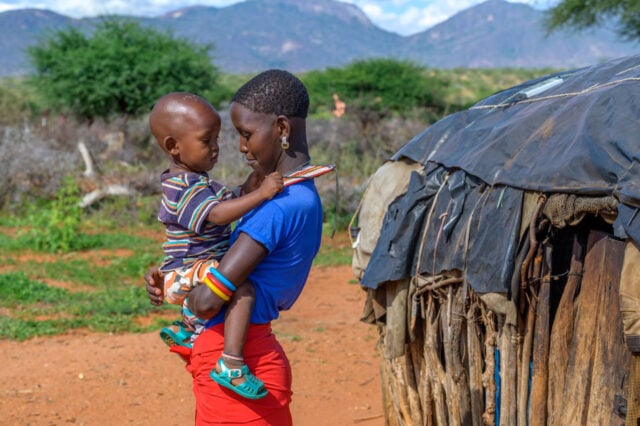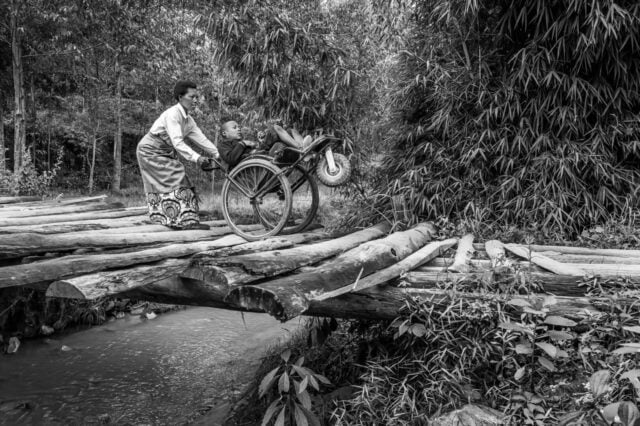Released today, a new scientific study by the University of North Carolina Water Institute shows that World Vision water wells continue to flow for decades. But not because the wells function better. They keep flowing for so much longer than others because World Vision teaches the people who need that water how to repair broken wells!
Read more about the study and see these programs in practice.
* * *
Today, we’re excited to announce the results of a new study by the University of North Carolina (UNC) Water Institute and Water and Sanitation for Africa. The study reveals critical information needed to help address the global water crisis, which UNICEF says kills 1,600 children a day. Read the full press release here.
This study shows that World Vision water wells continue to function at very high levels for more than two decades — far longer than wells usually work. Previous studies show that Africa is full of broken wells, sometimes as many as half no longer provide water.
The UNC study showed a different result for World Vision wells.

Amazingly, the World Vision wells were just as likely to be working after 18 years as after two — there was no significant effect with age. Though the study showed that World Vision wells broke down just as frequently as other wells, communities supported by World Vision took ownership of their wells through water committees and a small fee collection. This allowed them to repair broken wells efficiently.
The study was conducted in the Afram Plains of rural Ghana, where World Vision has been providing wells since 1985.
“World Vision is to be congratulated,” says Dr. Jamie Bartram, director of the UNC Water Institute. “This study showed a high level of functioning of World Vision wells based on having a water committee and charging a small fee to ensure funds were available for their repair.”
The World Vision water program in West Africa has provided sustainable access to clean water for millions of people. Diarrheal illness and trachoma have been dramatically reduced, and Guinea worm has been eradicated in Ghana!
I visited a water committee in the Afram Plains and saw how well it was organized. It had records of pump maintenance and fee collections. This community’s well is 20 years old. The repair committee recently maintained the well, and it had needed a major repair two years ago. The repair cost $150 — a large amount for this community. But they were able to cover it due to the fees collected over time.
I asked the chairman and the secretary of the water committee who owns the well: They told me that the community owns it. World Vision provided the well, but they now own it. They take care of it, maintain it, and repair it when it breaks.
We visited another site to see the fee collection. Communities decide themselves on the best way to collect fees. Some communities, like the one we visited earlier, charge on a monthly basis, while this community charges a few pennies for every water jug filled. The system works efficiently, and I could see from the records that they’re collecting a significant amount of money on a daily basis.
The highlight of my visit was seeing the repair committee in action. This committee includes both men and women, and they were doing normal maintenance of the well. From the way they laid out their tools in a professional manner, I could see that they’ve done this many times.
That well was deep, so they removed eight rods — each 10 feet long — before reaching the pump at the bottom. The pump needed a little cleaning to make sure that it continues to work efficiently, and that was done with a bucket of clean water and a little elbow grease.
Putting the pump back together is much faster, and many of the villagers gathered to see the final step. Seeing this work done, it was clear that it’s not rocket science to repair these wells. They have a simple design, and with good training, people without special skills are able to repair them. In fact, all the members of this repair committee are farmers who have volunteered to help maintain and repair the community well.
When the maintenance was done, there was a celebration. These people understand that their lives depend on clean water, and so it’s no surprise that when the water flows, there are shouts of joy.
The UNC results are a break-through validation of World Vision’s water work and model, and we’re continuing the work with UNC to improve it even more. We’re examining other factors that will lead to continued improvement in community engagement and to improve the efficiency of our work.

At World Vision, we believe that our deep engagement with communities, where we typically spend 15 to 20 years, gives us sufficient time to ensure that the community embraces the management of the wells. And it’s not only water that we are providing in communities — healthcare, education, and improved livelihoods as well. All of these factors and more are necessary to lift communities out of poverty. And that’s our goal — to transform the lives of people by providing clean water and empowering them to lift themselves out of poverty.
We’ve also produced two videos. The first is the in-depth story told through the eyes of Emmanuel Tenge, one of our sponsored children who is now a student at the University of Ghana. I wrote about Emmanuel previously when we visited the Afram Plains and found a World Vision well that was the same age as Emmanuel.
We also produced a shorter version of the video focused on just the results, which you can view here.
On average, World Vision provides clean water to a new person every 30 seconds! Join us in our effort to reach the millions more people around the world who still don’t have access. Give today!





Comments